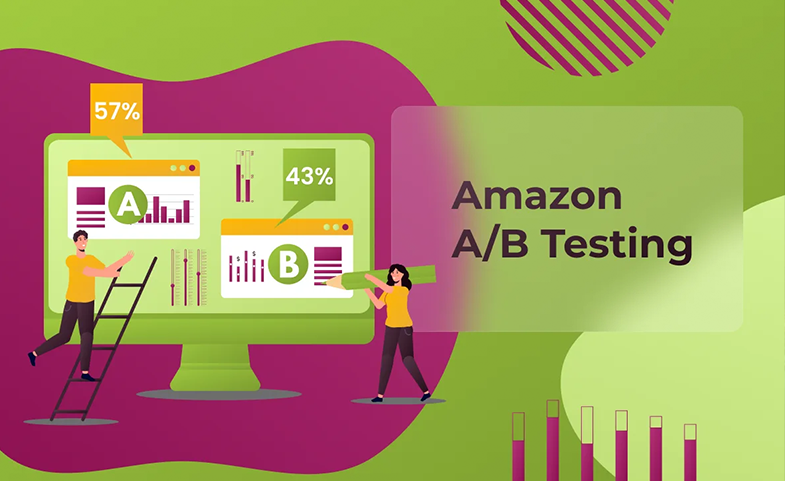Introduction:
In the competitive landscape of e-commerce, making your Amazon product listings stand out is crucial. A/B testing is a powerful technique that can significantly boost your sales and conversion rates by allowing you to optimize your product listings effectively. In this blog, we'll delve into the ins and outs of A/B testing for your Amazon listings, explaining what it is, why it's essential, and how to conduct successful A/B tests.
What Is A/B Testing?
A/B testing, also known as split testing, is a method that involves comparing two different versions of a web page or product listing to determine which one performs better. It's a data-driven approach where you make changes to one element (e.g., the product title, images, description, or price) and then measure the impact on user engagement, conversion rates, and ultimately, your sales.
Why A/B Testing Matters for Amazon Listings
Improved Conversion Rates
- A/B testing can help you identify which elements of your product listings are turning potential customers away and which are helping them convert. By making data-driven improvements, you can boost your conversion rates significantly.
Enhanced User Experience
- A/B testing allows you to refine the user experience on your product listings. A better user experience not only leads to more conversions but also fosters customer loyalty and positive reviews.
Competitive Edge
- With millions of products available on Amazon, standing out is challenging. A/B testing gives you the edge by helping you discover what works best for your target audience.
Cost-Effective
- A/B testing is a cost-effective way to increase sales compared to other marketing strategies. You're optimizing your existing resources rather than investing in new ones.
What elements of your Amazon listings can you run A/B Tests on?
You can run A/B tests on various elements of your Amazon product listings to optimize them for better performance. Here's a simplified breakdown of the elements you can test:
- Images: Test different product images to find the most compelling ones that lead to more clicks and conversions. High-quality images are crucial for online sales.
- Title: Create creative and informative product titles that showcase your product's key features. Test different title variations to see which one attracts more clicks in Amazon's search results.
- Price: Experiment with different pricing strategies. Avoid pricing too high or too low; find the sweet spot that maximizes conversions. Consider the psychology of pricing, such as the impact of subtle price differences.
- Bullet Points: Craft engaging bullet points that highlight your product's features and benefits. Test different lengths and the order of features to determine what resonates best with customers.
- Description: While it may not be the first thing shoppers see, your product description can still influence sales. Use the available 2,000 characters wisely, providing detailed information and incorporating relevant keywords to match customer search intent.
Steps to Conduct A/B Testing for Your Amazon Listings
Define Your Objectives
- Start by identifying what you want to achieve through A/B testing. It could be increasing click-through rates, improving conversion rates, or raising the average order value.
Select a Variable
- Choose one element to test at a time. Common variables include product titles, images, descriptions, pricing, and even the use of video content.
Create Variations
- Develop two versions of the selected element – the control (A) and the variation (B). For example, if you're testing product images, A might be the existing image, while B could be a new image.
Implement the Test
- Use Amazon's A/B testing features or third-party tools to conduct your test. Ensure that you're running the test at the right time, and collect data for both versions.
Analyze the Results
- After the test has run for a sufficient duration, analyze the data. Look for statistically significant differences between the control and variation to determine which is more effective.
Implement the Winner
- Once you've identified the winning version, implement it as the new standard for your product listing.
Rinse and Repeat
- A/B testing is an ongoing process. Regularly test different elements to continue improving your listings.
Best Practices for Amazon A/B Testing
Test One Element at a Time
- To obtain clear results, make sure you test only one element per A/B test. This ensures that any improvements or declines can be directly attributed to the changed variable.
Use Tools and Software
- Consider using A/B testing tools designed for Amazon, such as Splitly or PickFu, to streamline the process and provide more accurate results.
Keep Detailed Records
- Maintain records of your A/B tests, including the changes made, the data collected, and the outcomes. This will help you make informed decisions in the future.
Be Patient
- It may take time to see statistically significant results. Be patient and let the test run for an adequate duration.
Conclusion:
A/B testing your Amazon product listings is a game-changer in the world of e-commerce. By systematically refining your product listings through data-driven changes, you can significantly increase your conversion rates, drive sales, and create a competitive advantage on Amazon. So, start testing, keep optimizing, and watch your e-commerce business thrive in the world's largest online marketplace.


